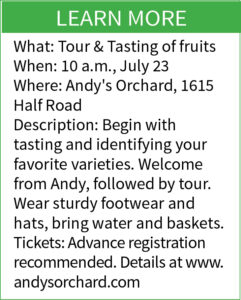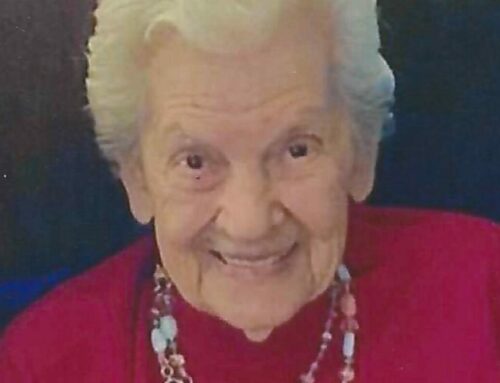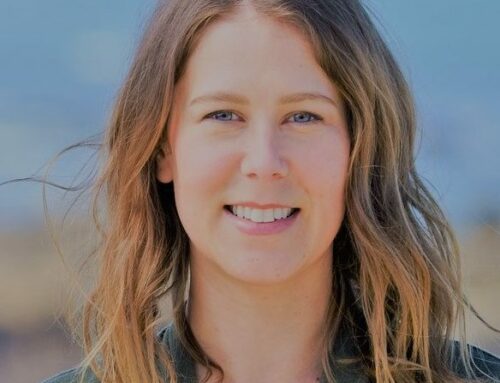We are changing nature and climate change is coming for agriculture. Can Andy’s Orchard and local farms adapt?
![]()

By Mike Monroe

Mike Monroe
I had to write another column about Andy’s Orchard — for three reasons. To highlight the final opportunity to enjoy an orchard tour this summer; to contemplate the sheer enjoyment of something so simple as eating a tree-ripened apricot or peach or savoring a cobbler smothered in ice cream; and to once again express my appreciation for a unique working family farm that has been able, for many years, to skillfully blend the fruits of nature with human design.
While I eagerly await the chance to pick more summer fruits, I felt it important to share some of the behind the scenes aspects of the first tour and tasting on Father’s Day. The focus that day was on cherries. Andy Mariani, the maestro and proprietor, always prepares a brief summary of what’s going on in the orchard and gathers the docents together for a brief update prior to the start of the tours.
Andy acknowledged the cherry crop was once again “pretty sparse” this year. When I did a preliminary walk through the orchard, I reported back to him, observing and confirming the same word — “sparse.” I noticed a momentary painful expression in his usual enthusiastic demeanor. No farmer or orchardist, especially one of Andy’s experience and work ethic, wants to say their harvest was below expectations. The reality of his “sparse” cherry crop was due to factors beyond his control, even with his peerless ability and knowledge.
 We are changing nature and climate change is coming for agriculture. Can Andy’s Orchard and local farms adapt?
We are changing nature and climate change is coming for agriculture. Can Andy’s Orchard and local farms adapt?
Cherries need a certain amount of time spent in winter dormancy. The measurement is called “chill hours.” Temperatures at night and during the winter are not cooling off enough, thereby impacting the quality and quantity of the setting fruit. Compounding the issue are the increasing bursts of high temperatures which cause the sugar levels in the ripening fruit to rise rapidly while the acidity, that historically comes from cool evenings, is unable to fully develop. This reality of faster ripening, known as ‘hang time,’ is especially relevant to sensitive fruit like cherries, but also applies locally to wine grapes and sweet corn.
I did not talk about water availability with Andy. I did point out to those in my tour group how Andy’s orchard trees are planted on raised berms, with the soil and the trees nourished through a sophisticated drip irrigation system. The likelihood of the drought continuing is high, stressing our subsurface water basins, necessitating deeper wells to be drilled in an effort to pump more water from South County aquifers and compensating for shrinking surface water reserves. Heat waves exacerbate drought conditions, affecting everything from soil moisture levels to fog frequency and cloud formation.
 Not to just dwell upon the challenges of climate change, Andy encouraged the docents to raise the occasion of the Juneteenth holiday, highlighting his Black Republican cherries that were available to harvest. The story goes that a Quaker family by the name of Lewelling from Iowa, who were staunchly opposed to the system of slavery, resettled in Oregon in 1847 after crossing the Midwest plains in covered wagons. The wagon not only contained their family possessions, but 700 seedlings of fruit trees — a rolling nursery. Seth Lewelling in 1860 introduced a black cherry hybrid called the “Black Republican” to support the rights of black people and honor the recent inauguration of a Republican President — Abraham Lincoln. I picked and tasted Black Republican cherries, and enjoyed some samples of Black Tartarian and Black Eagle cherries that Andy had set out. Very few fruit orchards today offer such an extensive variety of heirloom cherries.
Not to just dwell upon the challenges of climate change, Andy encouraged the docents to raise the occasion of the Juneteenth holiday, highlighting his Black Republican cherries that were available to harvest. The story goes that a Quaker family by the name of Lewelling from Iowa, who were staunchly opposed to the system of slavery, resettled in Oregon in 1847 after crossing the Midwest plains in covered wagons. The wagon not only contained their family possessions, but 700 seedlings of fruit trees — a rolling nursery. Seth Lewelling in 1860 introduced a black cherry hybrid called the “Black Republican” to support the rights of black people and honor the recent inauguration of a Republican President — Abraham Lincoln. I picked and tasted Black Republican cherries, and enjoyed some samples of Black Tartarian and Black Eagle cherries that Andy had set out. Very few fruit orchards today offer such an extensive variety of heirloom cherries.
 The very popular and the most widely grown cherry, the Bing, was available. The Bing is a cultivar introduced by the Lewelling Nursery in 1875. The cross pollination of the Black Republican cherry with the Royal Ann (also known as ‘Napoleon’) was named to recognize the 35-year career of Ah Bing, the Chinese foreman of the Lewelling Nursery. The name again reflects a social commentary by the Lewelling family, as Chinese immigrants were subject to prejudices and racism.
The very popular and the most widely grown cherry, the Bing, was available. The Bing is a cultivar introduced by the Lewelling Nursery in 1875. The cross pollination of the Black Republican cherry with the Royal Ann (also known as ‘Napoleon’) was named to recognize the 35-year career of Ah Bing, the Chinese foreman of the Lewelling Nursery. The name again reflects a social commentary by the Lewelling family, as Chinese immigrants were subject to prejudices and racism.
One last story about the Father’s Day tour. Andy made a display comparing a large red peach purchased from a grocery store with one of his early varieties that was smaller and yellow in color. Which peach tastes better he asked — the showier peach genetically bred for shelf life, size and color or the heirloom tree-ripened peach picked at the peak of flavor? Discover the answer at Andy’s Orchard.
Mike Monroe is an amateur historian and naturalist who enjoys all the wonders of the southern Santa Clara Valley. Mike and his family have resided in Gilroy since 1986.






